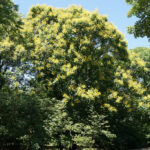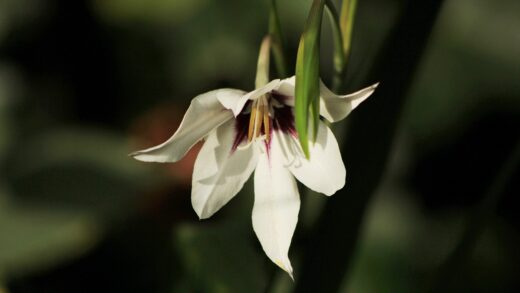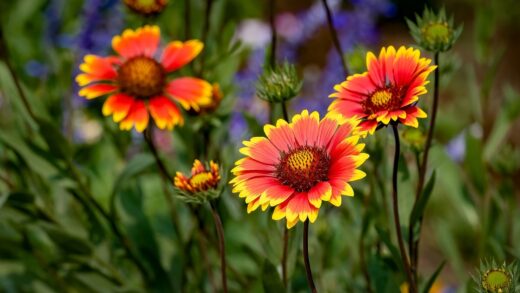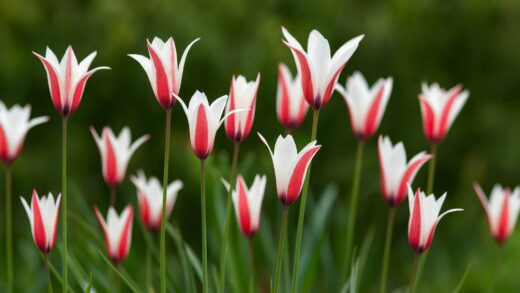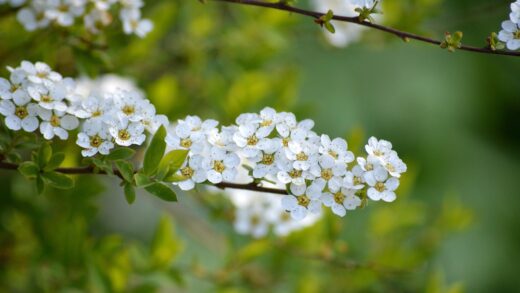Successfully overwintering Caryopteris is a relatively straightforward affair, as this is a robust and hardy shrub well-suited to a variety of climates. Its ability to withstand cold temperatures is one of its many celebrated traits, allowing gardeners in many regions to enjoy its beauty without the need for elaborate winter protection. The plant’s primary vulnerability during the dormant season is not the cold itself, but rather the combination of cold and excessively wet soil. Therefore, the key to ensuring its survival through the winter months lies in providing excellent drainage from the outset. Understanding how the plant behaves in winter and taking a few simple preparatory steps in the autumn will give your bluebeard the best possible chance to emerge healthy and vigorous in the spring, ready for another season of spectacular bloom.
The natural winter habit of Caryopteris often involves some degree of dieback in the colder parts of its growing range. It is very common for the upper portions of the stems to be killed by frost, turning brown and brittle over the winter. This is a perfectly normal survival mechanism and should not be a cause for concern. The plant’s energy and life force are stored safely in its crown and root system, which are much more insulated and protected below the soil line. Because this shrub produces its flowers on new growth that emerges in the spring, this winter dieback has no negative impact on its future flowering performance.
In fact, the plant’s growth habit is perfectly complemented by a hard pruning regimen in late winter or early spring. This annual task, which involves cutting all the stems back to a height of about 15-20 centimeters, serves to remove all the wood that may have been damaged by the winter cold. This process rejuvenates the plant, encouraging it to send up a flush of strong, new, flower-bearing stems from its base. Thus, the apparent damage seen after a harsh winter is neatly resolved by routine seasonal maintenance, making winter care for this shrub remarkably simple and worry-free.
While mature, well-established plants are typically very self-sufficient, younger plants in their first or second year may benefit from a little extra care as they head into their first winters. A young plant’s root system is not as extensive and may be more susceptible to the stresses of freezing and thawing soil. Ensuring that a young plant is well-watered in the autumn before the ground freezes is important, but the most beneficial step is to provide a protective layer of mulch after the first hard frost has occurred.
The primary goal of winter care is to protect the plant’s root system. The roots are the lifeblood of the shrub, and as long as they remain healthy, the plant will rebound in the spring, even if the top growth has died back completely. The most significant threat to the roots during winter is not the cold temperature itself, but the physical damage that can be caused by the soil freezing and thawing repeatedly, which can heave the plant out of the ground. Additionally, roots sitting in cold, waterlogged soil are highly susceptible to rot, which is often fatal.
More articles on this topic
Preparing for dormancy
The preparation for successful wintering begins in the late summer and autumn. One of the most important steps is to cease all fertilization by mid-summer. Applying fertilizer late in the season can stimulate a flush of new, tender growth that will not have adequate time to mature and harden off before the first frosts arrive. This succulent new growth is extremely vulnerable to frost damage and can be an entry point for disease, potentially compromising the health of the entire plant. Allowing the plant to slow its growth naturally as the days get shorter is crucial for its winter readiness.
As autumn approaches, you should also begin to taper off any supplemental watering. While it is important that the plant does not go into the winter completely dehydrated, overwatering in the cool, damp conditions of autumn can be very detrimental. Saturated soil in the fall increases the risk of root rot as the plant’s water uptake slows down. Allow the soil to dry out more between waterings and let the natural autumn rainfall take over, unless you are experiencing a severe and prolonged drought. A final deep watering after the leaves have dropped but before the ground freezes solid can be beneficial, especially for younger plants.
Good garden sanitation in the autumn is another key preparatory step. After the leaves have fallen from the Caryopteris and surrounding plants, it is wise to rake them up and remove them from the garden bed. This practice helps to reduce the number of fungal spores and pest eggs that can overwinter in the garden debris, leading to a healthier start in the spring. This cleanup also allows for better air circulation around the base of the plant and prevents the creation of a damp, matted layer of leaves against the crown, which could encourage rot.
It is also important to resist the temptation to prune the shrub back in the autumn. While the bare stems might look a bit untidy, they provide a certain degree of protection to the plant’s crown during the winter. The standing stems can help to trap insulating snow around the base of the plant and can buffer the crown from harsh, drying winds. Waiting until late winter or early spring to perform the annual pruning is the correct and most beneficial timing for the long-term health and performance of the plant.
More articles on this topic
The role of mulch for winter protection
Applying a layer of mulch in late autumn is one of the most effective and highly recommended practices for wintering Caryopteris, especially in colder climates or for newly planted specimens. The purpose of this winter mulch is not to keep the ground warm, but rather to keep it consistently cold. It acts as a layer of insulation that helps to prevent the damaging freeze-thaw cycles that can occur during sunny winter days followed by cold nights. These fluctuations can heave the plant’s root ball out of the soil and can cause significant damage to the root system.
The timing of the mulch application is critical. You should wait until after the first hard frost of the season, and preferably after the ground has frozen to a shallow depth. Applying the mulch too early, while the ground is still warm, can trap that warmth and delay the plant’s dormancy. It can also create a cozy haven for rodents like voles and mice, which may then chew on the bark at the base of the plant during the winter, causing significant damage. Waiting for the cold to set in ensures the plant is fully dormant and discourages rodent activity.
A variety of organic materials can be used for winter mulching. Shredded leaves, straw, pine needles, or shredded bark are all excellent choices. Apply a loose, airy layer approximately 10-15 centimeters deep around the base of the plant, extending out to the drip line. It is important to pull the mulch back a few centimeters from the main stems or crown of the shrub. Piling mulch directly against the stems can trap excess moisture, which can lead to crown rot, especially during periods of winter thaw or spring rain.
In the spring, as the threat of hard frost has passed and you begin to see the first signs of new growth at the base of the plant, it is time to gradually rake the winter mulch away. Removing the mulch allows the sun to reach the soil and warm it up, which encourages the plant to break dormancy and begin its new season of growth. Leaving the mulch in place for too long can delay this process and can keep the soil overly wet. The old mulch can be added to your compost pile or spread thinly in other areas of the garden.
Winter care for container-grown plants
Caryopteris grown in containers requires some special consideration for the winter, as their root systems are far more exposed to the cold than those of plants in the ground. In a pot, the roots are only insulated by a thin layer of plastic or ceramic and the potting soil, making them vulnerable to freezing solid, which can be fatal. The appropriate wintering strategy for a potted bluebeard will depend on the severity of the winters in your particular climate.
In regions with mild winters, you may be able to leave the container outdoors in a protected location. Move the pot to a spot where it will be sheltered from the harshest winter winds and excessive rain, such as against the wall of the house, under a deck, or in a covered porch. Grouping several containers together can also provide some mutual insulation. It is important to ensure the pot is not in a rain shadow where it gets no moisture at all, as the soil should not be allowed to dry out completely, even in dormancy.
For those in colder climates where the temperature regularly drops well below freezing for extended periods, providing additional insulation for the container is necessary. One simple method is to wrap the entire pot in a layer of bubble wrap, burlap, or an old blanket to provide an extra layer of insulation for the roots. Another effective technique, known as “plunging,” involves digging a hole in an empty garden bed and sinking the entire pot into the ground up to its rim. The surrounding soil will then provide excellent insulation for the roots throughout the winter.
In the very coldest climates, it may be necessary to move the container into an unheated but protected space, such as a garage, a shed, or a cold cellar for the winter. The goal is to keep the plant dormant and the roots from freezing, not to encourage it to grow. The space should remain cold but stay above freezing. The plant will not need light during this time, but you will need to check the soil moisture every month or so and provide a small amount of water just to keep the soil from becoming bone dry. In the spring, gradually reintroduce the plant to the outdoors after the danger of hard frost has passed.










